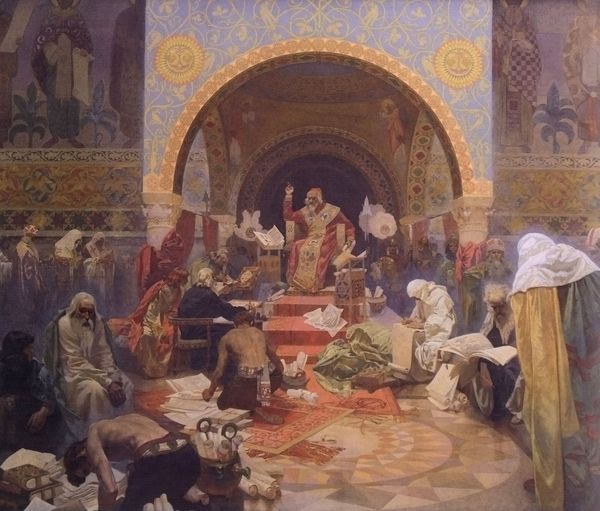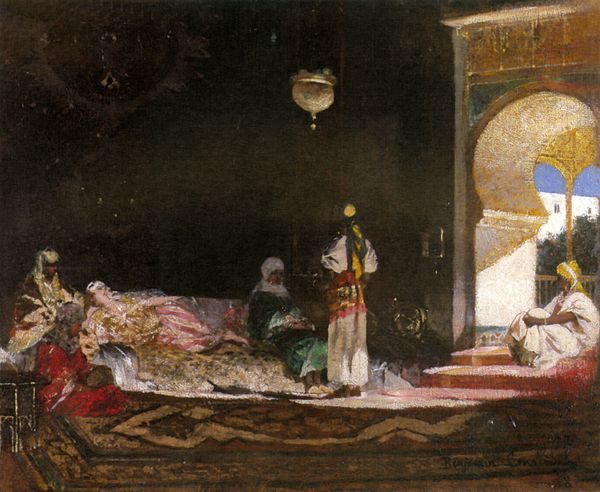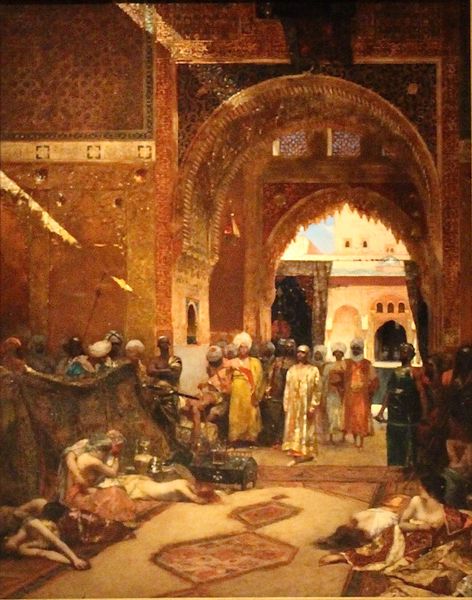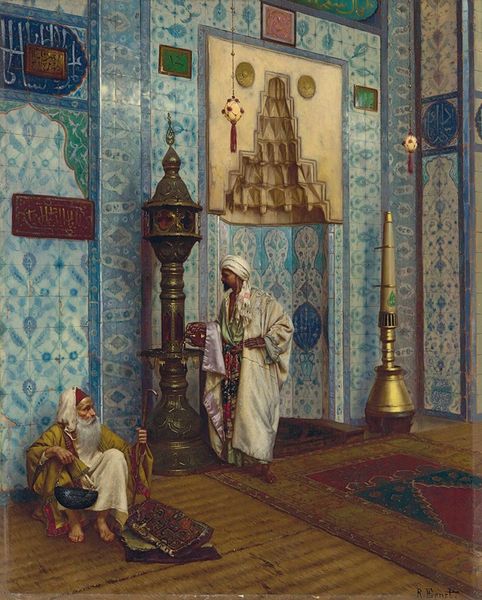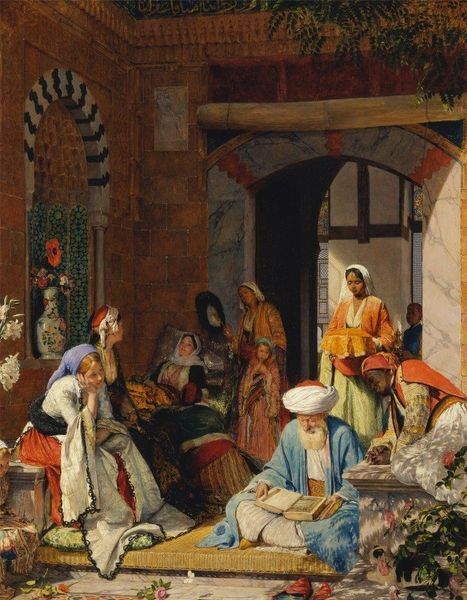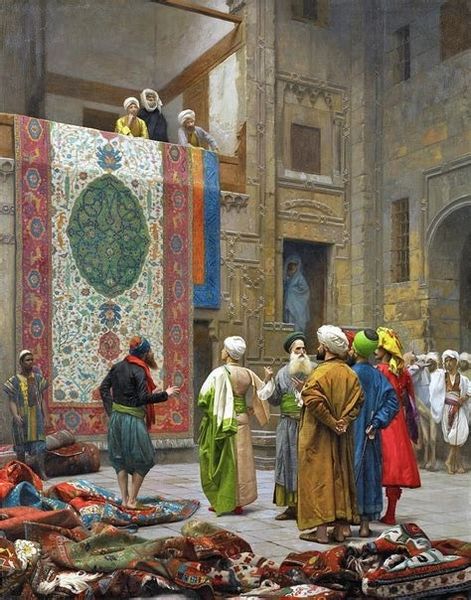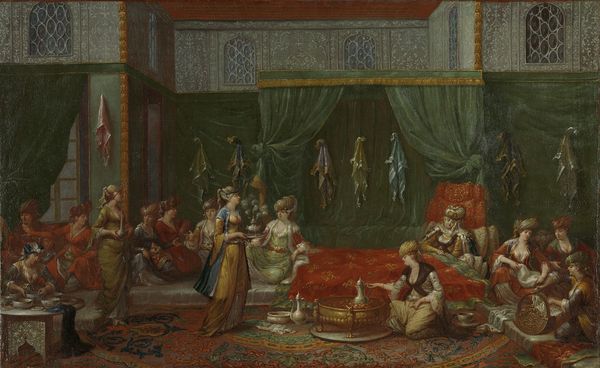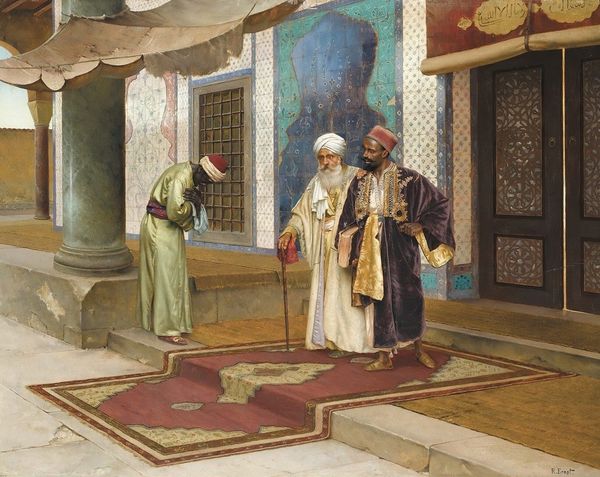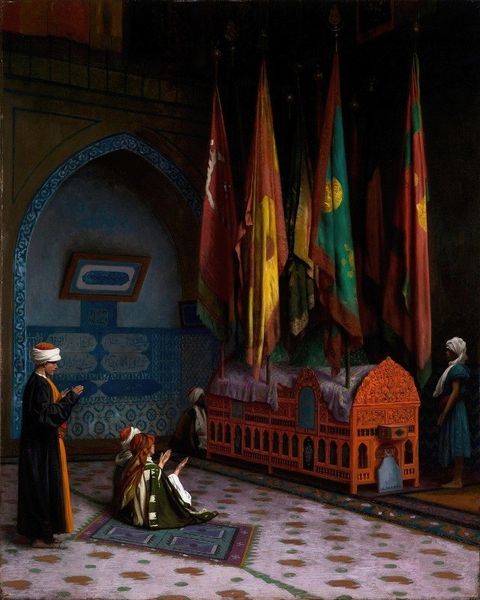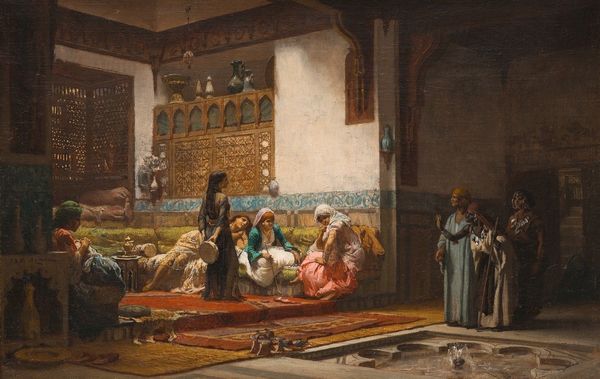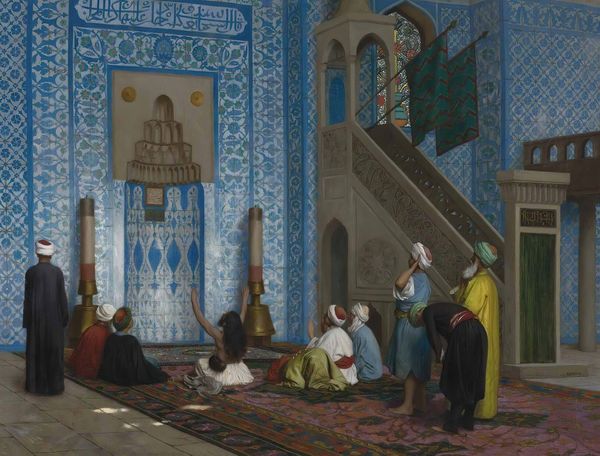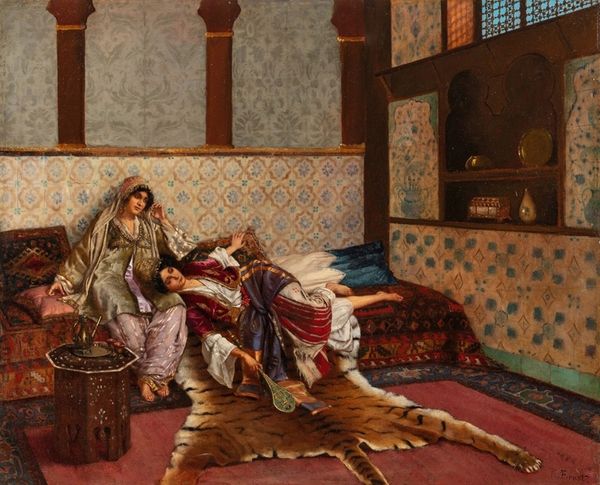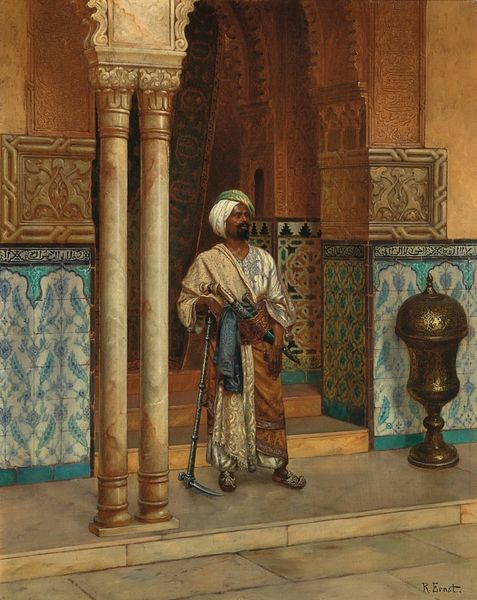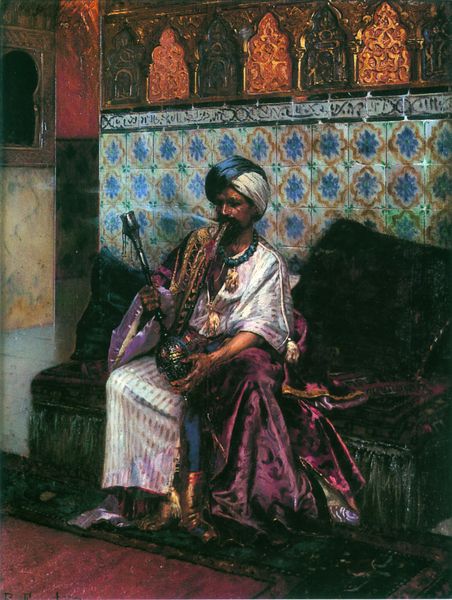
oil-paint
#
gouache
#
baroque
#
oil-paint
#
oil painting
#
romanticism
#
orientalism
#
painterly
#
genre-painting
#
history-painting
#
academic-art
Copyright: Public domain
Curator: It always makes me chuckle to consider what we deem "historical." This piece, "Les Présents D'un Pacha," roughly "Gifts of a Pasha," just radiates orientalist fantasies. What leaps out at you? Editor: The overwhelming sense of languor and, frankly, sweatiness. You can almost feel the heat shimmering off those oil-painted surfaces. It’s intensely textural and kind of… stifling. What materials are we looking at specifically? Curator: We know Jean-Joseph-Benjamin Constant worked quite skillfully in oils, embracing a painterly quality aligned with his moment and this academic style that was nevertheless pushing for liberation and emotion. Though that doesn’t erase its problematic colonial gaze, does it? Editor: Certainly not. The means of production also interest me, beyond the impasto and lush coloration of oil on canvas; consider the very real goods likely flowing through colonial trade routes – carpets, fabrics, the Pasha’s garments. They all embody specific value and networks. Curator: Indeed, "orientalism" created a marketable style, feeding European fantasies through exoticized scenes and commodified goods. I am also moved by this push/pull between realism and an imagined space... do you notice that the lighting has almost a theatrical quality to it? Editor: It’s fascinating how this 'painterly' technique simultaneously reveals and obscures the true conditions under which the textiles were created. Look at how little attention is paid to the labor of their production; everything’s so carefully framed for leisure and reception. Curator: Precisely! That’s the crux of orientalist paintings, isn’t it? Obscuring labor, romanticizing power, packaging it all for European consumption. I wonder if this piece aimed to provoke awe... and desire? Editor: I think it’s a commentary on commodity fetishism long before that became academic jargon. What does luxury even *mean* in such a setting? It’s like this canvas itself becomes another layer of obfuscation. Curator: The piece gives us so much to think about, the ways in which aesthetics and political viewpoints may find themselves entangled. Editor: Ultimately, even as "historical" source, it speaks most profoundly of how things were made, how value was assigned and displayed.
Comments
No comments
Be the first to comment and join the conversation on the ultimate creative platform.
